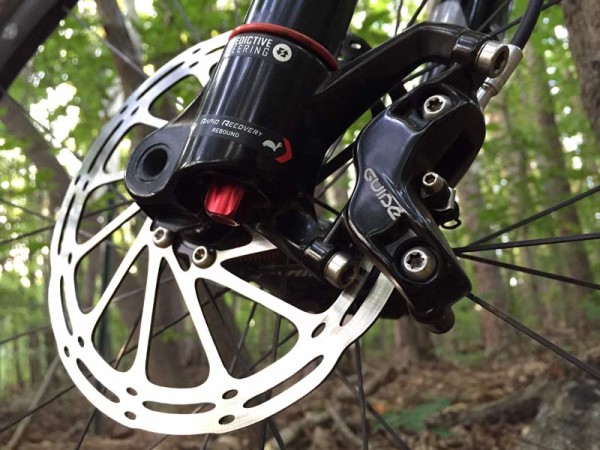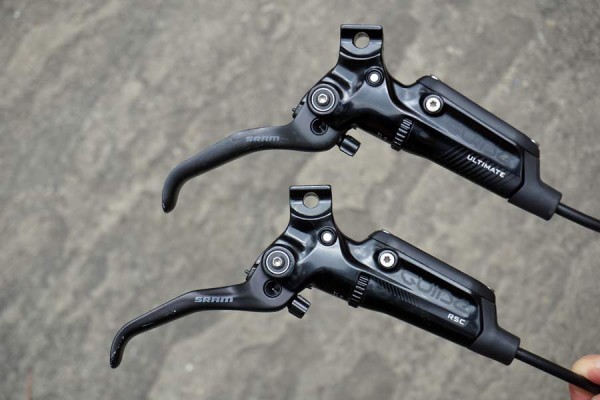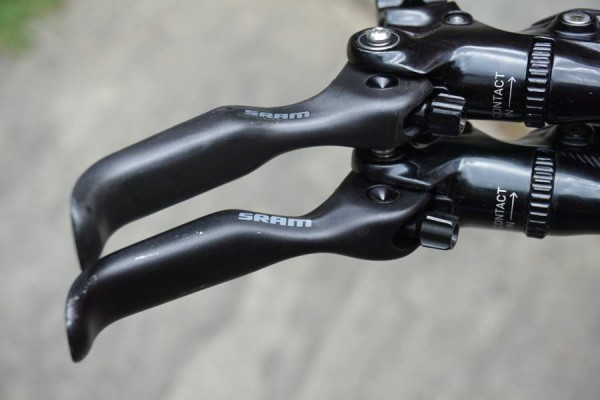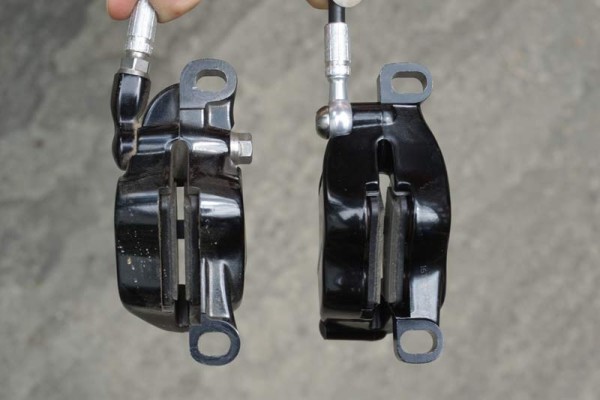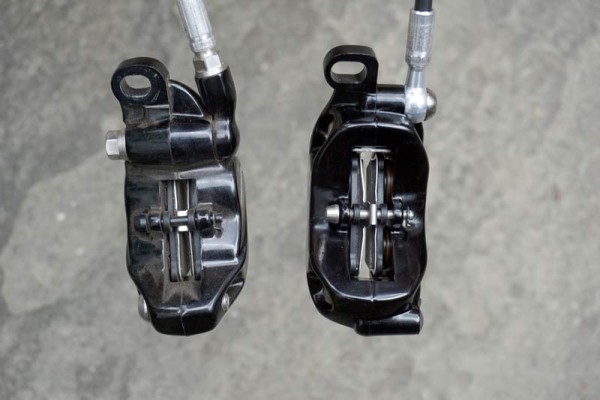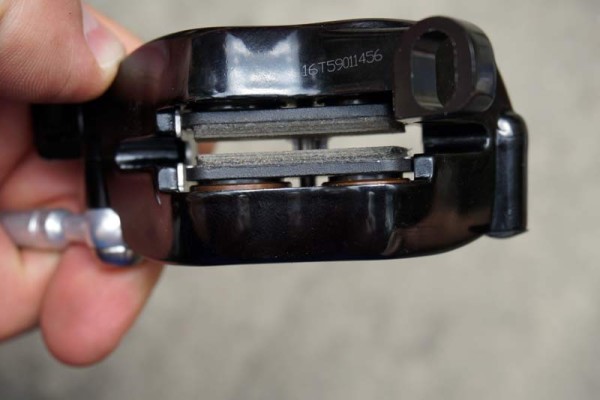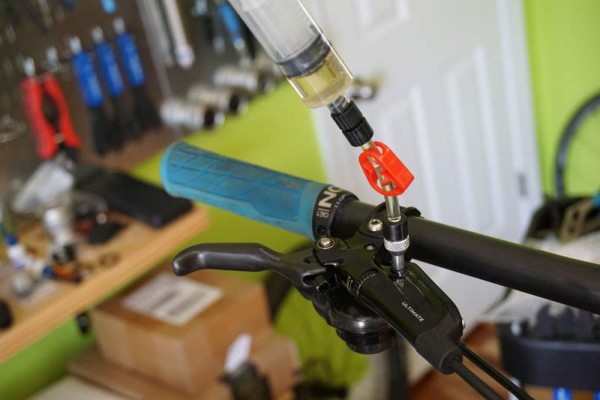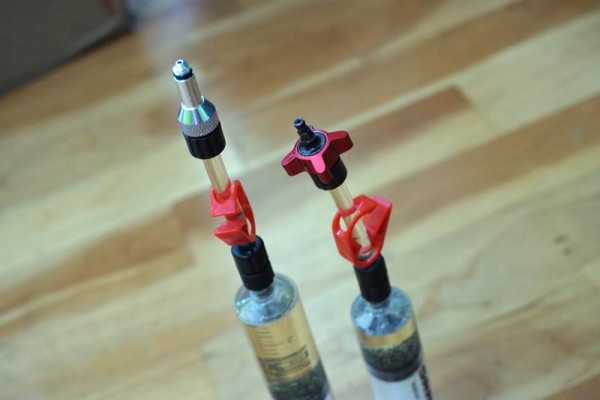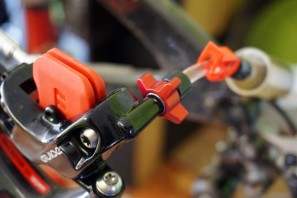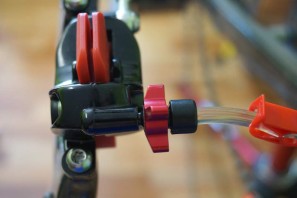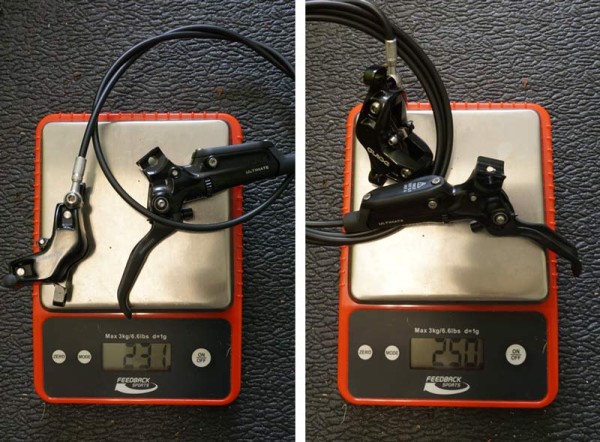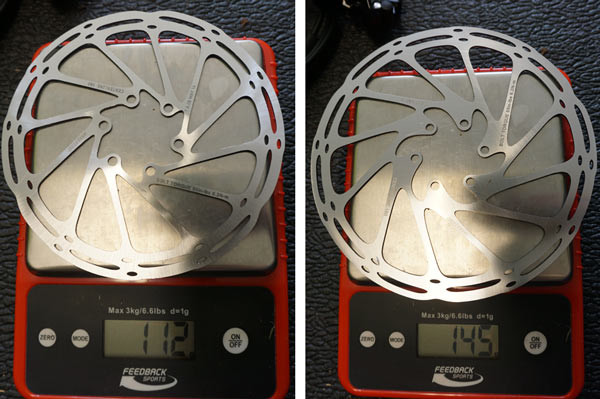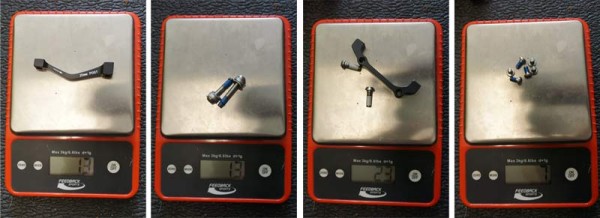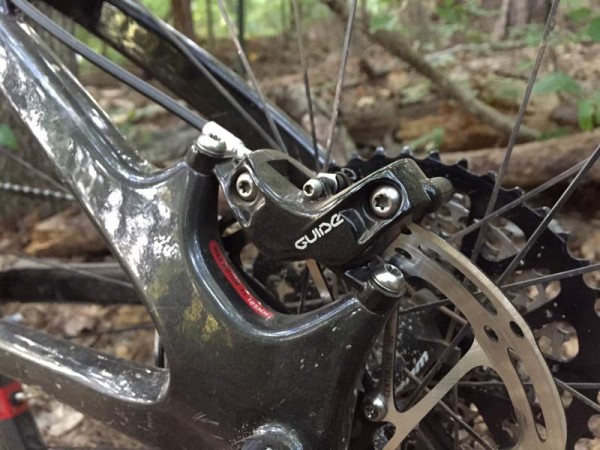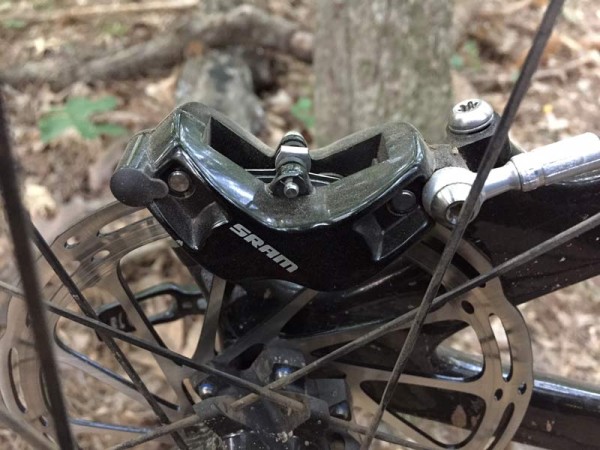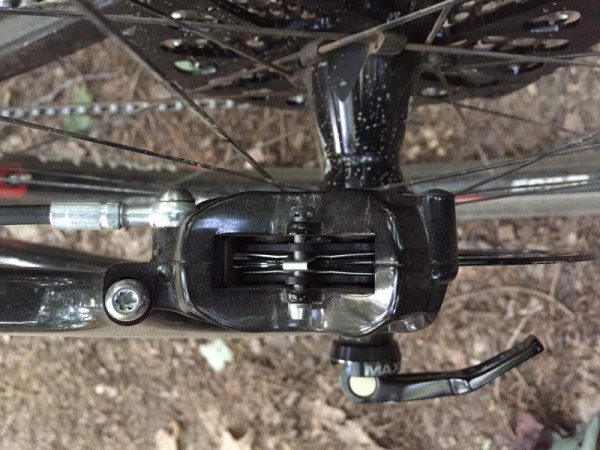Earlier this year, SRAM one-upped their already remarkable Guide brakes with an Ultimate version that improved upon the little things. After all, if it ain’t broke, you may as well still go ahead and tinker with it anyway, right?
While the levers were mostly left alone, they did upgrade to titanium hardware and a carbon fiber lever. Internally, they’re the same, carrying off all of the tool-free adjustments of the now second-in-the-line RSC model. That means dialed reach and pad contact adjustments just a few finger twists away, both with a useable range of adjustment.
The calipers saw many more updates inside and out to make service easier, save a few grams and keep them cooler under hard, extended use. Stop on in for a comparison to RSC, actual weights and first ride impressions…
Only hardware and lever material change here…
…and at a quick glance, you’d be hard pressed to tell the difference.
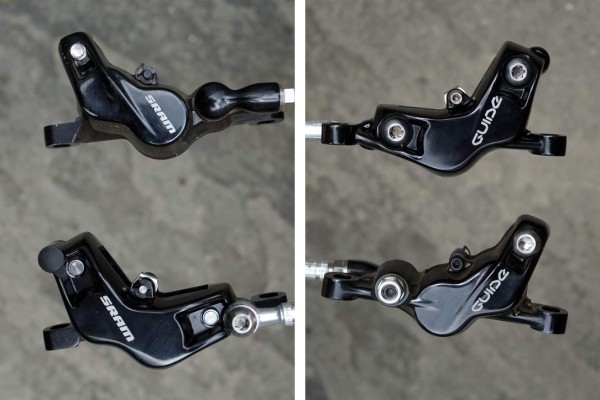
The calipers also look similar at first glance, but there are several external changes. The bleed port moves from the outside top to the inside bottom, and is now covered by a rubber plug. The inside caliper body is also smooth, without the ridge shaping it like on the RSC. Both versions keep the ridge on the outside face.
While the RSC’s caliper looks much more chiseled than the Ultimate, the new brakes are lighter by more than a couple grams.
The less chiseled look is more apparent from the bottom…
…and the top, but note the more forward position of the hose banjo. That makes room for a bigger opening around the pads, which allows for much more air flow (better cooling) and space to remove the pads from the top.
SRAM also opened up space around the pistons to further improve airflow. That, combined with material and design changes to the pistons and seals all help them shed heat faster than before. The full internal tech details are in this post.
The lever’s bleed port is the same, using the original Avid bleed plug and plunger system. The hoses come in at 1800mm for the rear, and I ended up cutting off about 170 of those millimeters off to fit a size large Niner JET9 RDO. Conveniently, that gave me a reason to test the new Bleeding Edge port on the calipers.
The original bleed plug is on the left, the new Bleeding Edge plug is on the right. The original threads in to create the seal, the new one pops in, then the red bezel threads away from the caliper to lock it into place and open up the port.
Not sure if it was the insides of the caliper or the red bezel, but the first turn required grabbing it with pliers to get thing started. When finished, just thread it back toward the caliper and pull it out. No fuss, no muss.
SRAM GUIDE ULTIMATE ACTUAL WEIGHTS
With stock length hoses (950mm and 1800mm), the brakes weigh in at 231g and 250g. My Guide RSC brakes weighed in at 241g and 259g, giving the Ultimates a 19g savings.
More weight is supposed to be saved at the rotors with the new Centerline X two-piece rotors, but I got the standard models with the brakes. SRAM sells the rotors separately so you can get exactly the size you need, which is the way more and more brands are going. Actual weights for the 160mm and 180mm are 112g and 145g respectively. Claimed weights for the two-piece versions are 102g and 125g, saving 10-20g depending on size.
Parts come in at 13g (20mm direct mount spacer), 13g (caliper mounting bolts), 23mm (IS adapter) and 7g (six rotor bolts).
FIRST IMPRESSIONS
I’d be lying if I said the Ultimates feel drastically different than the RSC Guide brakes. I installed and rode them prior to reviewing the announcement from March that detailed all the changes, lest it skew my opinions, and here’s what stood out: The lever feels slightly (and I do mean SLIGHTLY) springier, bouncing back a bit more quickly and seeming to have an ever so gentler push back against the finger…in a good way. It makes modulation easier and provides a more responsive brake.
From there, braking performance around my local XC trails is identical (I did back to back test sections since I have the RSC mounted to a second JET9). It’ll take a trip to the big mountains with sustained descents to tell if the improved heat management designs do anything (they certainly can’t hurt), but the RSC brakes were already fantastic on big, long, steep descents.
The biggest improvements really come in the form of user friendliness. Not that you should have to bleed them often (my RSC brakes have been flawless for a year without doing anything but riding them), but the Bleeding Edge design is brilliant. Not a drop of fluid escaped when removing the plunger. Now, if only they’d add it to the levers, too, it’d be perfect.
The ability to swap pads without having to remove the brakes is another big improvement, especially since this is likely to be a more frequent service issue than bleeding.
Are they worth the $80-per-wheel premium over the RSC model? If you’re frequently pushing the limits of your brakes or tend to service them often, probably so. Otherwise, since the standard Guide brakes are so good, it really comes down to that age-old question of dollars spent to grams saved.
